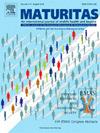乳腺癌后的骨骼健康指南
IF 3.6
2区 医学
Q2 GERIATRICS & GERONTOLOGY
引用次数: 0
摘要
乳腺癌是导致女性死亡的主要原因。激素受体阳性的癌症通常通过手术结合内分泌治疗来治疗。众所周知,后者会降低雌激素水平,从而导致骨密度(BMD)下降和骨折风险增加。骨修饰剂(bone- modification agents, BMAs)可以调节癌症治疗对骨骼的不良影响。绝经前妇女静脉注射唑来膦酸钠可有效防止骨质流失。然而,关于其减少疾病复发的能力的证据仍然没有定论。在绝经后妇女中,一项有力的随机对照试验证实了denosumab预防骨折的最有力证据,但尚未显示其具有抗癌益处。虽然双膦酸盐能有效预防和减少临床椎体骨折,但其对整体骨折风险的影响尚不清楚。在临床实践中,这组患者的骨健康管理从骨折风险分层开始。这可以使用FRAX算法完成;骨矿物质密度的测量可以帮助骨折风险较高的个体优化分层。在解释结果时,建议谨慎,因为FRAX算法被认为低估了这一人群的真实骨折风险,因为该算法没有根据抗癌药物的效果进行调整。目前,氯膦酸盐、依班膦酸盐和唑来膦酸被推荐用于这类患者的骨保护,而地诺单抗则不被推荐。需要进一步的研究来根据患者的特点突出最佳BMA。本文章由计算机程序翻译,如有差异,请以英文原文为准。
Navigating skeletal wellness after breast cancer
Breast cancer is the leading cause of death in the female population. Hormone receptor-positive cancers are usually treated with surgery in combination with endocrine therapy. The latter is known to lower estrogen levels, contributing, therefore, to loss of bone density (BMD) and higher risk of fracture. Bone-modifying agents (BMAs) can regulate the bone-related adverse effects of cancer treatment. In premenopausal women, intravenous zoledronate effectively prevents bone loss. However, the evidence regarding its ability to reduce disease recurrence remains inconclusive. In postmenopausal women, denosumab demonstrates the most substantial evidence for fracture prevention, supported by one well-powered randomized controlled trial, but has not been shown to confer anticancer benefits. While bisphosphonates effectively prevent and reduce clinical vertebra fractures, their impact on overall fracture risk is unclear. In clinical practice, management of bone health in this group of patients starts with stratification for the risk of fracture. This can be done using the FRAX algorithm; measurements of bone mineral density can help to optimize stratification for individuals at higher fracture risk. Caution is advised when interpreting the results, as the FRAX algorithm has been considered to underestimate the true fracture risk in this population, given that the algorithm has not been adjusted for the effect of anti-cancer agents. Nowadays, clodronate, ibandronate, and zoledronic acid are recommended for bone protection in this group of patients, while denosumab is not. Further research is required to highlight the optimal BMA according to patient characteristics.
求助全文
通过发布文献求助,成功后即可免费获取论文全文。
去求助
来源期刊

Maturitas
医学-妇产科学
CiteScore
9.10
自引率
2.00%
发文量
142
审稿时长
40 days
期刊介绍:
Maturitas is an international multidisciplinary peer reviewed scientific journal of midlife health and beyond publishing original research, reviews, consensus statements and guidelines, and mini-reviews. The journal provides a forum for all aspects of postreproductive health in both genders ranging from basic science to health and social care.
Topic areas include:• Aging• Alternative and Complementary medicines• Arthritis and Bone Health• Cancer• Cardiovascular Health• Cognitive and Physical Functioning• Epidemiology, health and social care• Gynecology/ Reproductive Endocrinology• Nutrition/ Obesity Diabetes/ Metabolic Syndrome• Menopause, Ovarian Aging• Mental Health• Pharmacology• Sexuality• Quality of Life
 求助内容:
求助内容: 应助结果提醒方式:
应助结果提醒方式:


